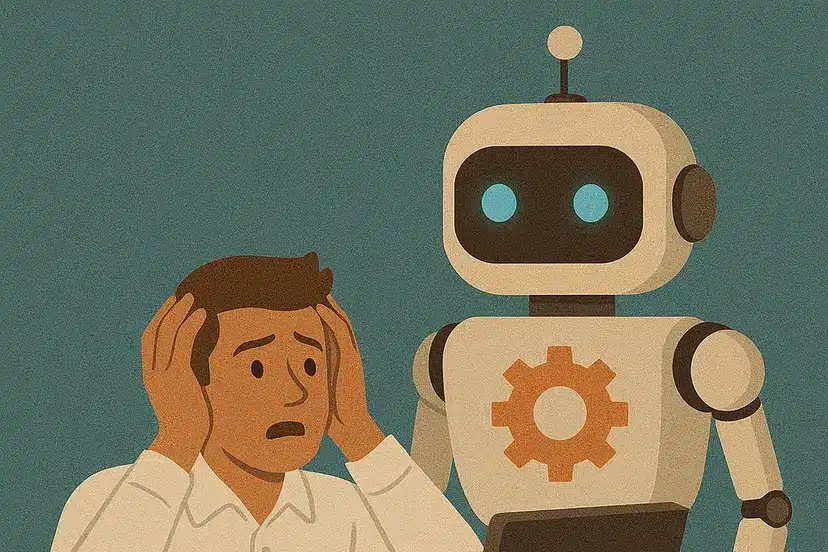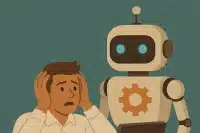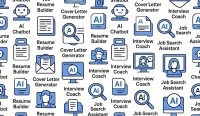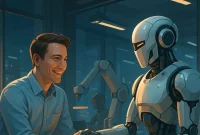The Debate That’s Missing The Point
Right now, the loudest voices on both sides of the AI jobs debate are missing something crucial. On one side, doomers predict near-universal unemployment within years, with estimates that AI could wipe out half of white-collar entry-level jobs and push unemployment to 10–20%. On the other side, skeptics dismiss AI as overblown hype that won’t fundamentally transform the economy, pointing out that we’re nowhere near AGI and that cost savings haven’t materialized as predicted.
Both perspectives are flawed. History, industry data, and economic principles suggest AI will transform the economy—but not destroy it. The missing piece is an economic principle discovered in 1865: Jevons Paradox.
The Radiologist That Defied Prediction
Back in 2016, Geoffrey Hinton—Turing Award winner and one of the godfathers of AI—declared that people should stop training radiologists. “It’s just completely obvious that within five years, deep learning is going to do better than radiologists,” he predicted. Hinton understood neural networks better than almost anyone. But he was wrong.
Almost ten years later, demand for radiologists hasn’t gone to zero. It’s actually at an all-time high. This is despite the launch of dozens of state-of-the-art AI products that can detect and classify hundreds of diseases faster and more accurately than humans.
What explains this? Medical industry factors like malpractice concerns and insurance regulations requiring humans in the loop play a role. But the deeper explanation is economic: when we gave radiologists tools that sped up one aspect of their job, demand for their services actually exploded. Cheaper scans meant more scans. More scans meant more demand for complex diagnosis and treatment planning from radiologists.
When technology pushes down the cost of using a resource, demand for that resource and its associated services can skyrocket. This is Jevons Paradox in action.
The Radiologist That Defied Prediction
AI didn’t replace radiologists — it amplified them. Faster tools created cheaper scans, which unlocked more demand and deeper diagnostic complexity. When technology increases efficiency, it often expands the market instead of shrinking it. The future belongs to those who learn to work with intelligent systems, not against them.
Post Jobs & Hire AI-Augmented Healthcare Talent →The Economic Principle That Explains Everything
Jevons Paradox was first proposed in England in the mid-19th century when economist William Stanley Jevons observed that technological improvements increasing coal’s efficiency actually increased coal consumption across industries. This ran contrary to assumptions that increased efficiency would lower consumption. What Jevons showed was that efficiency gains often reveal latent demand—and this new demand can create entirely new categories of work.
History is full of examples. When containerization made shipping 90% cheaper in the 1960s, some dock workers were initially laid off. But global trade exploded, leading to billion-dollar empires in freight forwarding, logistics, and warehouse distribution. Jobs didn’t disappear—they transformed and multiplied.
When cloud computing made infrastructure 10x cheaper in the 2010s, traditional IT roles transformed. Server admins became DevOps engineers and cloud architects, managing infrastructure at scales that previously seemed impossible. The transformation created more roles, not fewer.
Most recently, as algorithmic improvements pushed down the cost of AI inference, demand for GPUs has skyrocketed, not cratered. Nvidia stock recently hit an all-time high. Lower costs revealed massive latent demand.
Why Demand Increases When Costs Fall
As Aaron Levie, CEO and co-founder of Box, recently wrote: “We should expect that efficiency increases will actually mean more, not less, demand for services in a bunch of fields.” When the cost of doing work goes down, demand for it goes up. Usually, there’s far more pent-up demand than we realize.
As AI makes it cheaper, faster, and easier to analyze MRIs, draft legal documents, and write code, we should expect demand for radiologists’ treatment plans, lawyers’ counsel, and engineers’ expertise to broadly increase, not decrease. Cheaper inputs unlock new use cases, broader access, and higher volume—which requires more human expertise to orchestrate, interpret, and apply.
This doesn’t mean jobs won’t change. Many roles that previously involved manual human involvement will look more like supervising teams of AI agents. Humans will still be in the loop, but their responsibilities will shift from execution to orchestration and judgment.
The Transformation, Not Elimination
Andrej Karpathy, one of the co-founders of OpenAI, had a similar take. He argues that AI will first transform jobs that are rote, require little context, and are forgiving of mistakes—things like customer service agents and data entry. But even then, he thinks many of these jobs will be refactored into manager or supervisor roles rather than disappearing entirely.
We’re already seeing this transformation. Companies like Y Combinator portfolio companies are demonstrating the pattern. AOKA, an AI-powered sales agent for service-based industries like plumbing and HVAC, is freeing up customer service agents to do higher-value work. Tenor, which automates paperwork flow between healthcare providers, is transforming admin roles from data entry to patient care coordination and complex case management.
Often these are “horribly boring rote jobs” that suddenly become more interesting when you’re supervising an army of AI agents. Many tasks AI is automating—dealing with impatient customers or filling out routine forms—are unenjoyable. Though some jobs will disappear, as with the internet, we can expect generally more engaging ones will take their place.
What This Means For The Future
The AI transformation is absolutely real and advancing as we speak. This isn’t the time to indulge in fantasies about fully automated luxury communism or the imminent collapse of the entire human economy. But it’s also not the time to underestimate change like Paul Krugman did in 1998 when he compared the internet’s impact to a fax machine.
AI is the next thing as big as—if not bigger than—the internet itself. The future isn’t waiting for a permission slip to start. It’s being built right now by people who see opportunities others don’t. Every great company starts with a founder who decides to take that leap and bet on their conviction.
The key insight is that economic systems are more resilient and adaptive than either doomers or skeptics assume. When technology makes something cheaper, it often unlocks massive latent demand. When jobs are automated, new categories of work emerge. When tasks become trivial, humans focus on higher-value judgment, creativity, and orchestration.
Key Takeaway
Both AI doomers and skeptics miss Jevons Paradox: when technology makes work cheaper, demand often skyrockets. Radiologists are at an all-time high despite superior AI. Containerization and cloud computing created more jobs, not fewer. AI will transform jobs—humans become supervisors of AI agents rather than executing rote tasks. The transformation is real, but the economy adapts through increased demand and new categories of work.
FAQs
What is Jevons Paradox?
An economic principle showing that when technology makes using a resource more efficient, consumption often increases because lower costs unlock latent demand and new use cases.
Why did radiologist demand increase despite superior AI?
Cheaper scans led to more scans, which increased demand for complex diagnosis and treatment planning. AI automated one part of the workflow but expanded overall demand for radiologists’ expertise.
Will AI eliminate jobs or transform them?
Mostly transform. Jobs will shift from rote execution to supervising AI agents, making judgment calls, and handling complex cases. Some roles will disappear, but new categories typically emerge—as with containerization and cloud computing.
What’s wrong with the doomer perspective?
It assumes static demand and ignores that lower costs unlock latent demand, creating new use cases and requiring more human expertise to orchestrate, interpret, and apply AI outputs.
What’s wrong with the skeptic perspective?
It underestimates transformation by focusing on near-term metrics. The internet didn’t show its full impact in the first few years, and AI’s transformation will unfold over decades as infrastructure, tools, and use cases mature.




